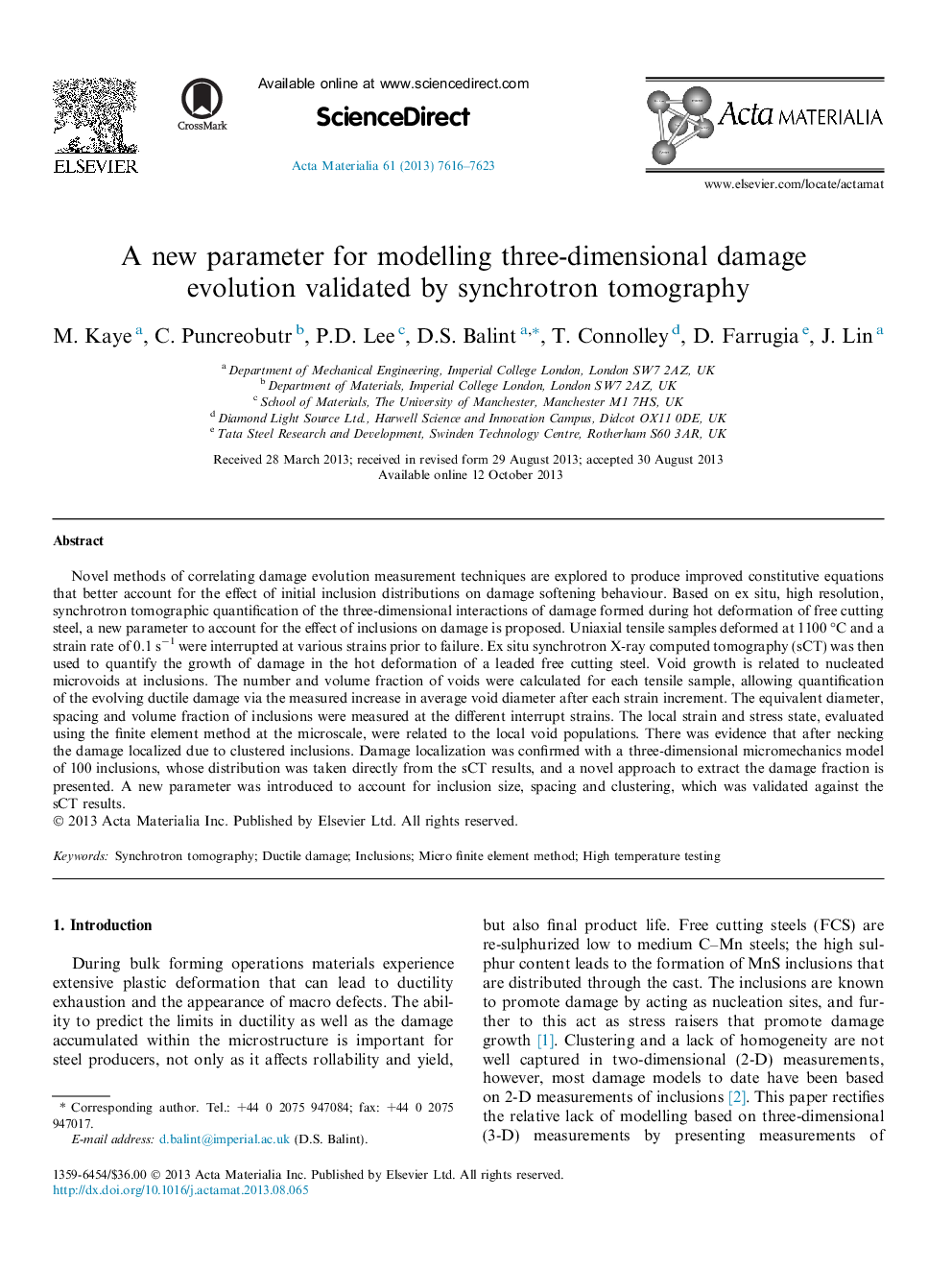| Article ID | Journal | Published Year | Pages | File Type |
|---|---|---|---|---|
| 1446182 | Acta Materialia | 2013 | 8 Pages |
Novel methods of correlating damage evolution measurement techniques are explored to produce improved constitutive equations that better account for the effect of initial inclusion distributions on damage softening behaviour. Based on ex situ, high resolution, synchrotron tomographic quantification of the three-dimensional interactions of damage formed during hot deformation of free cutting steel, a new parameter to account for the effect of inclusions on damage is proposed. Uniaxial tensile samples deformed at 1100 °C and a strain rate of 0.1 s−1 were interrupted at various strains prior to failure. Ex situ synchrotron X-ray computed tomography (sCT) was then used to quantify the growth of damage in the hot deformation of a leaded free cutting steel. Void growth is related to nucleated microvoids at inclusions. The number and volume fraction of voids were calculated for each tensile sample, allowing quantification of the evolving ductile damage via the measured increase in average void diameter after each strain increment. The equivalent diameter, spacing and volume fraction of inclusions were measured at the different interrupt strains. The local strain and stress state, evaluated using the finite element method at the microscale, were related to the local void populations. There was evidence that after necking the damage localized due to clustered inclusions. Damage localization was confirmed with a three-dimensional micromechanics model of 100 inclusions, whose distribution was taken directly from the sCT results, and a novel approach to extract the damage fraction is presented. A new parameter was introduced to account for inclusion size, spacing and clustering, which was validated against the sCT results.
